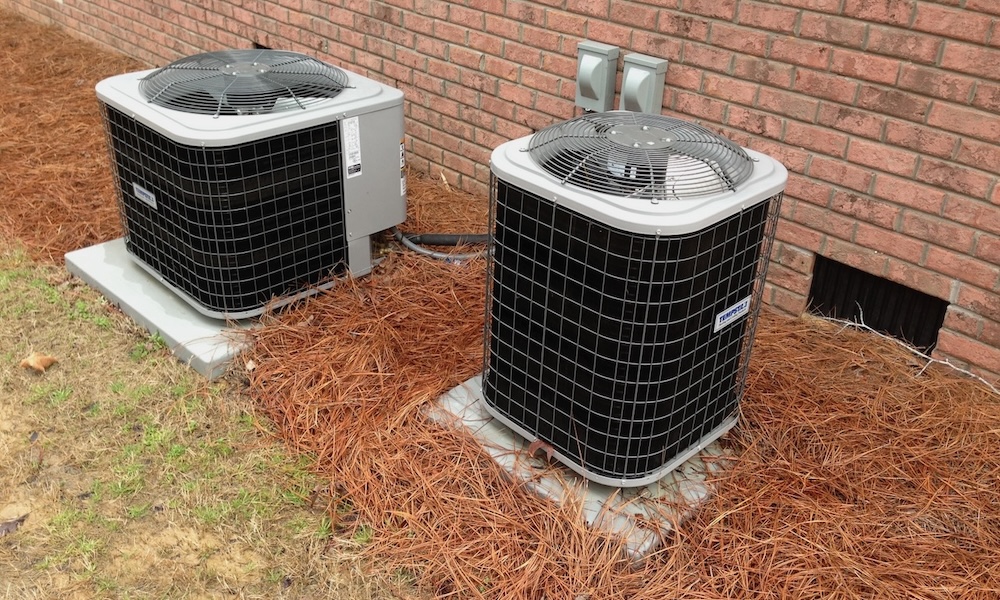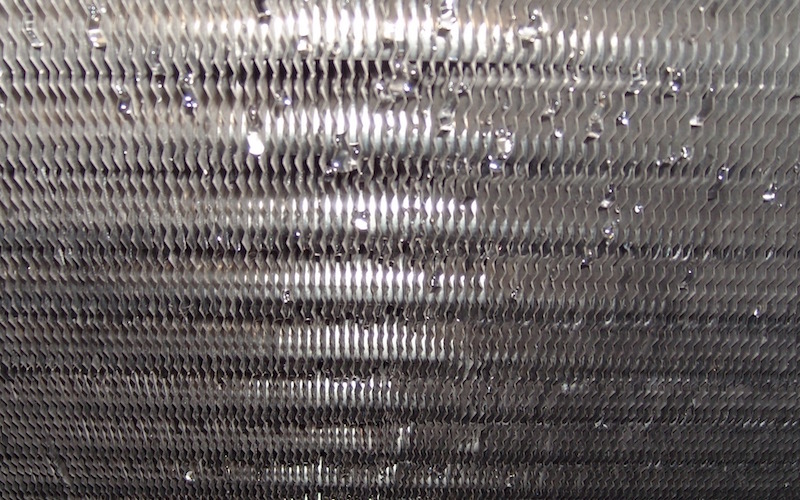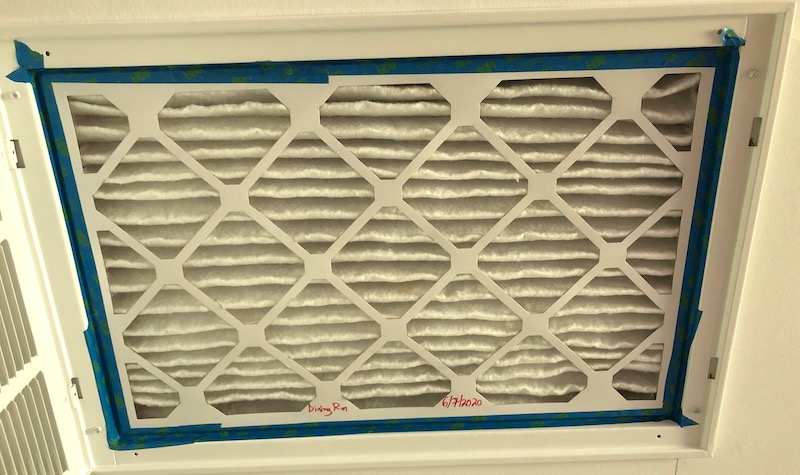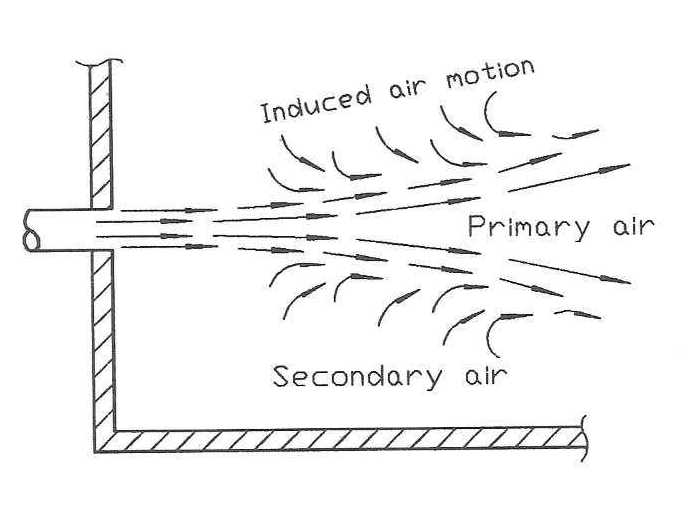An Air Conditioner Does at Least 4 Jobs

The most noticeable thing about an air conditioner is that it blows cool air into the house. When you come indoors after doing yard work on a hot summer day, that may be all that matters to you. But air conditioners do so much more. Or at least they can, when you take full advantage of their capabilities. Let’s look at four things that your AC can do to make your life better.
Cooling
We don’t need to say much here. When air passes over the cold evaporator coil, its temperature drops. In the HVAC world, we call that sensible cooling because it’s the kind of cooling a thermometer can sense.
Inside the air conditioner, 75 °F (24 °C) passes over the evaporator coil. The coil is at a temperature of about 40 °F (5 °C). So the air temperature drops. When it comes out, it’s usually somewhere around 55 °F (13 °C).
Dehumidifying
This is a function that’s just as important as cooling when you live in a humid climate. That’s because our bodies use evaporative cooling to shed some of the excess heat we build up. The human body is a heat engine after all. So. just like the internal combustion engine in most vehicles, we need cooling. And if the humidity in the air around us is too high, we can’t do as much cooling through evaporation.

That brings us right back to the cold evaporator coil. As that air passes over it, the water vapor in the air falls in love. It rushes to that cold metal and starts collecting in droplets on the coil (photo above). When the droplets get big enough, they drain down through the fins on the coil and into the pan.
When the water level in the pan gets high enough, it drains away. And that’s when you’ve actually done some dehumidification. (If you want to make your humidity worse, just set the thermostat to keep the fan running continuously. But don’t do that!)
Removing water vapor from the air is another part of what an air conditioner does. Dropping the temperature is called sensible cooling. Reducing the humidity is called latent cooling.
Filtering
I’ve written a lot about doing good filtration with forced air heating and cooling systems. You have to be careful, though, because high-efficiency filters also have higher resistance to air flow. To do it without having a negative impact on the air flow of your system, the key is proper sizing.
First, though, let me explain what I mean by good filtration. As you might expect, it’s all about how much stuff the filter can remove from the air passing through it. OK, well, not really ALL about…
The first thing you have to do is eliminate filter bypass. You want all of the air passing through the system to go through the filter. Any air bypassing the filter carries its dust and pollutant load with it. We don’t want that. In the photo below, the blue tape around the filter eliminates bypass.

Then you want a high efficiency filter. The best way to do that is to get one with a high MERV rating. The MERV scale goes from 1 to 16. Indoor air quality researchers have found the MERV 13 is the ideal filter to go with because it’s really efficient and has lower resistance to air flow than the higher MERV filters. You just have to size them properly, which I explained in a previous article and refined in some followup articles.
With MERV 13 filtration, your indoor air quality can improve significantly. It also can help prevent illness because many infectious diseases spread through airborne particles.
Mixing
Another benefit of a well-designed duct system is good mixing of the indoor air. This is as true for heat pumps and furnaces as it is for air conditioners.

It also can help the whole-house ventilation system, if there is one, do a better job. By eliminating stagnant pockets of air, the ventilation system can do more dilution. As long as the outdoor air is cleaner than indoor air, that improves your indoor air quality.
Air conditioning is a great thing. Just remember that it does more than just cooling.
Allison A. Bailes III, PhD is a speaker, writer, building science consultant, and the founder of Energy Vanguard in Decatur, Georgia. He has a doctorate in physics and is the author of a bestselling book on building science. He also writes the Energy Vanguard Blog. For more updates, you can follow Allison on LinkedIn and subscribe to Energy Vanguard’s weekly newsletter and YouTube channel.
Related Articles
The Path to Low Pressure Drop Across a High-MERV Filter
Comments are welcome and moderated. Your comment will appear below after approval. To control spam, we close comments after one year.

Love reading your b*s articles and comments.
Here us something I use in some of the seminars I do as an ASHRAE DL.
“The similarity between a building engineer and an HVAC system is that nobody knows their there and nobody cares – until there’s a problem”.
Feel free to use it if you so desire.
Jim Newman
Great quote, Jim! I may well use that sometime.
Thanks Allison, for another great article! One comment: Your article highlighted that an HVAC condenser helps to reduce humidity in your home. We live in Massachusetts, along the shore, and we need AC for only a few weeks every summer. HOWEVER, the humidity can be a real problem. So I installed a dehumidifier in our HVAC system (Aprilaire), and I can run this independent from our AC condenser. So we can ‘dial down’ the humidity (for cheap!) with the Aprilaire, for weeks before we need to turn on the condenser. This approach would also work well in places like Atlanta, where I also lived. Push the humidity down, and you need less costly AC. It’s that simple.
Allison: Think about in the old days we had candles ,gas lights and kerosene lamps to light our house/cabins. Indoor air quality???????